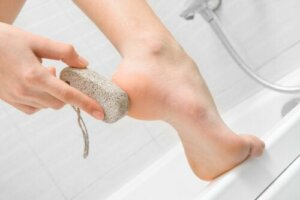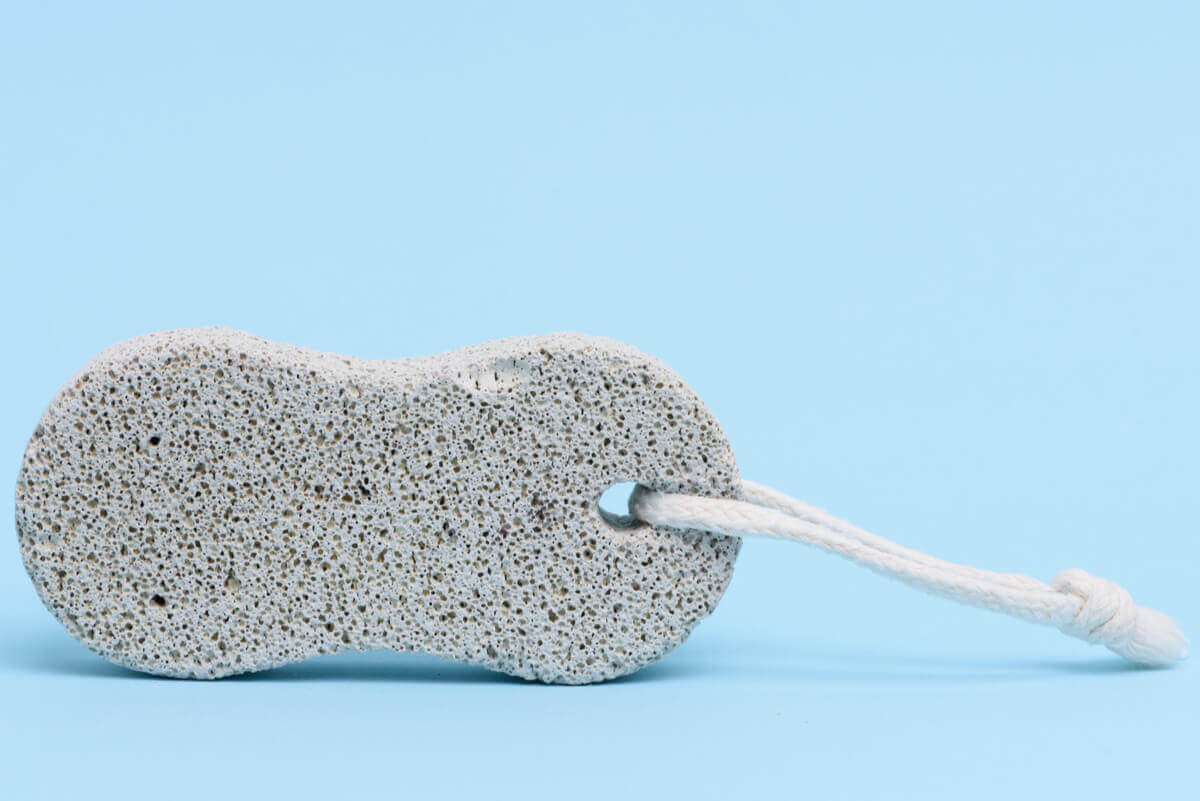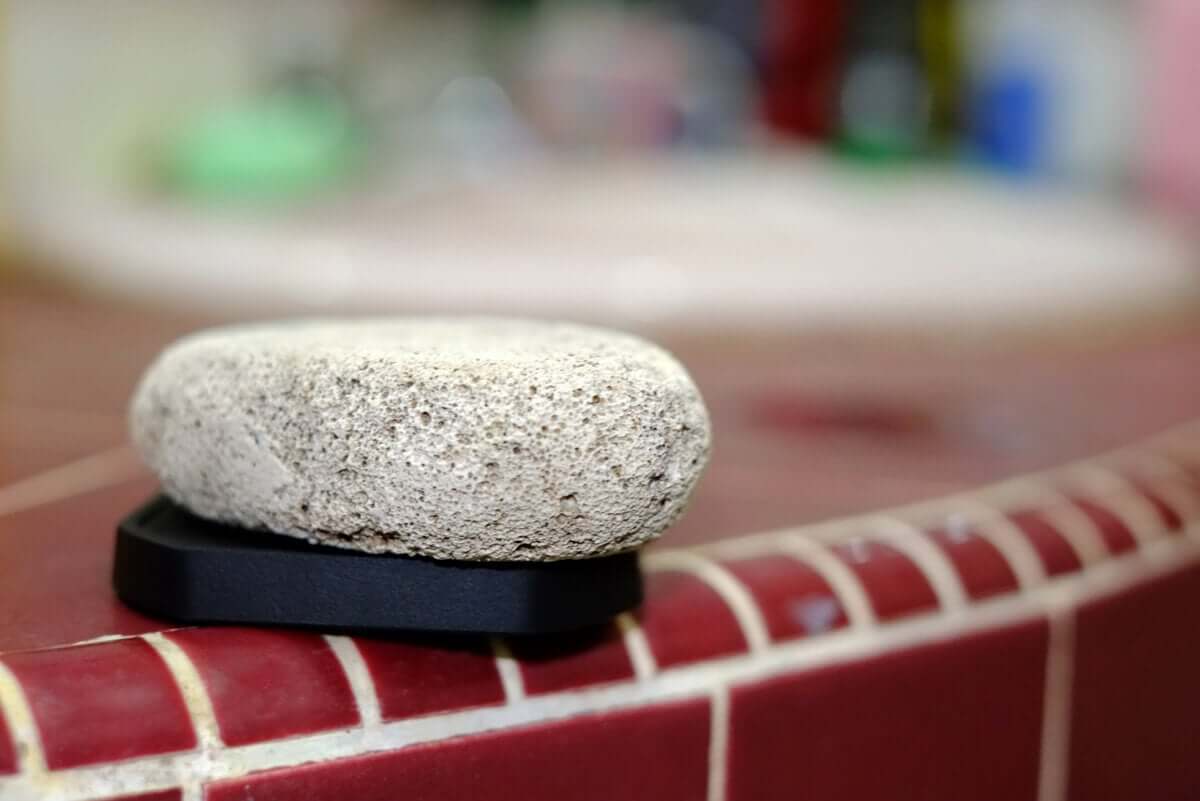The Benefits of Using Pumice

Using pumice has become popular because of its many benefits. They come in all shapes, sizes and colors. This volcanic rock is also known as pumicite in its powdered or dust form and its use dates back thousands of years.
Roman engineers, for example, used it as a complement to concrete to help build and bring their architectural models to life. In fact, it’s still used for these purposes and different ways of improving cement from its components are being researched.
It’s such a resistant material that it can be exposed to cold, fire, and humidity without being affected. Pumice is hard, yet so light that it floats on water. It’s characterized by its abrasive power, but delicate with the skin. That’s why a great part of its indications are related to cosmetics. And this is just the beginning!
Benefits of using pumice on the skin
As we mentioned above, pumice has become popular thanks to the gentle, painless way it can benefit our skin. Here’s how you can use it at home.
Hair removal
People have been using pumice as a way to remove hair on any part of the body for years. Its use as such dates back to the ancient Egyptians, Greeks and Romans. These civilizations mixed this element with ointments and natural oils to remove hair and perform beauty rituals.
Today, thousands of years later, we still use stones for many reasons! Its greatest advantage is that after removing unwanted hair, it leaves the skin soft and renewed. It’s important to keep in mind that this practice isn’t recommended for very dry skin.
On the other hand, you should always have a soap or foam that helps you make the circular movements to obtain the desired results.

Exfoliates the skin
This stone has abrasive properties that you can use to loosen the skin. Even in any normal supermarket, you can find liquid or compact soaps made of pumice stone powder.
The Indian culture first used the practice of handmade peeling with the aim of removing the first layer of skin for different reasons. Bear in mind that the objective isn’t to hurt the skin – we recommend wetting the pumice stone and using it with natural oils.
Softens hard areas
Using pumice is very common in beauty centers. It’s usually used to remove thick layers of dead skin in areas like our feet and hands. In addition to removing these calluses, pumice softens these areas.
To obtain the desired results, you should soak the area that you will exfoliate, preferably with warm water. Then use a soap that allows the stone to glide smoothly. After that, soak it and, with gentle circular movements, the skin that has softened with the water begins to fall off.
Also read: How Do Facial Masks Work on The Skin?
Other uses for pumice
This rock is so versatile that you can use it in different areas of everyday life. From saving clothing, giving some jeans a distressed look so that it’s fashionable and cleaning pet fur, to removing impurities and dirt from some household utensils.
Removes pellets from clothes
Little balls on clothes often appear in areas where there’s a lot of rubbing, because of bad washing or because the material is prone to it. However, you can moisten the rock and rub it very carefully on the clothes you want to save!
Stretch out your clothes and, with the help of your hands, keep them stretched out while rubbing the stone on them. It’s important to do this process calmly and carefully as we could actually end up ruining our favorite blouse or pants. However, pumice stone is also very effective if you want to transform some boring old jeans into new fashionable ones.
Removes pet hairs
If you have pets, you probably love them with all your heart. But that doesn’t mean that we’re OK with wearing clothes covered in fur or that having furniture with an extra layer of fur is fun. In these cases, this volcanic rock is also very effective. This is because the hairs get trapped in the little pores.
It also applies to cleaning carpets, curtains and car seats. All you have to do is rub it with circular movements on the desired surface. On delicate fabrics you can moisten it to facilitate the process.
Cleans grease build-up from the oven
If your oven is full of hard grease after cooking those delicious meals, you can use pumice. You only have to rub it a little, not too much. Make this process easier with a little soap or degreasing liquid. Another good trick is to put a little bicarbonate over the greased surface and then clean it with the wet pumice stone.
Removes impurities from the toilet
Having dirt in the toilet makes us all feel uncomfortable. The worst thing is that not all cleaning products can actually remove it completely. In these cases, just grab a pair of gloves, wet the stone in hot water and rub the most affected areas.
If this is how you’re planning to use it, just go to the store where you’ll be able to find different options with a plastic handle that helps you clean in a more comfortable way!

You may like: The Best Plants for Your Bathroom
How to clean pumice?
Although this stone is characterized by its strength, we do need to apply a good cleaning routine when using it at home. This is especially true when we use it on skin. Doing this not only extends its life span, but it also protects the body.
We recommended washing the stone with hot water. Use a toothbrush to rub it and remove any impurities that may be between its pores. Then, wash it again with hot water. In addition to this process, you can sterilize it from time to time by immersing it in boiling water for five minutes.
To dry it, place it on a dry cloth and expose it to the sun or the open air so that it dries naturally. You should never just leave it wet, as fungi or bacteria could proliferate.
A cheap solution
Pumice is a great ally of beauty and cleanliness. Having this simple product in your house is a great idea, it can help you clean many things with little effort. Another benefit of this volcanic rock is that it is on the market at very good prices.
All cited sources were thoroughly reviewed by our team to ensure their quality, reliability, currency, and validity. The bibliography of this article was considered reliable and of academic or scientific accuracy.
- Natera G, Alfredo E., Peraza Urrutia, Irene, & Uzcátegui Giannattasio, Gladys M. (2005). microabración del esmalte técnica para la remoción de manchas dentales. Acta Odontológica Venezolana, 43(3), 318-322. Recuperado en 17 de noviembre de 2020, de http://ve.scielo.org/scielo.php?script=sci_arttext&pid=S0001-63652005000300019&lng=es&tlng=es.
- Myrna Rodríguez Acar, Fermín Jurado Santa Cruz, Maribet González González, Leticia Paulina Alfaro Orozco, Miguel Ángel Cardona Hernández. Liquen plano pigmentado invertido:
revisión del tema a propósito de un caso. Rev Cent Dermatol Pascua • Vol. 22, Núm. 3 • Sep-Dic 2013. Disponible en: https://www.medigraphic.com/pdfs/derma/cd-2013/cd133f.pdf - Amaguaya Gushqui, Byron; Ruíz Cárdenas, Kerly. Estudio comparativo de la terapia de Exfoliación química y Exfoliación mecánica en el tratamiento de pacientes de 20 a 25 años de edad que presentan secuelas cicatriciales post acné atendidos en el Laboratorio de Clínica Estética de la Universidad Católica Santiago de Guayaquil, año 2016. Universidad Católica de Santiago de Guayaquil (Trabajo de grado en línea). Disponible en: http://192.188.52.94/bitstream/3317/7569/1/T-UCSG-PRE-MED-NUTRI-232.pdf
- Jiménez González, Tatiana. Eber. Proyecto de Artes Pásticas, Universitas Miguel Hernández de Elche (2014 – 2015). Disponible en: http://dspace.umh.es/bitstream/11000/2325/1/TFG%20Jimenez%20Gonz%C3%A1lez,%20Tatiana.pdf
- GONZÁLEZ CUERVO, CLAUDIA PAULINA, & MONTAÑO ANGARITA, ÁNGELA MARCELA, & CASTRO RODRÍGUEZ, DIANA CATALINA (2012). Obtención y caracterización de geopolímeros, sintetizados a partir de ceniza volante y piedra pómez, utilizados para el desarrollo y mejoramiento del concreto. El Hombre y la Máquina, (38),59-65. ISSN: 0121-0777. Disponible en: https://www.redalyc.org/articulo.oa?id=478/47823946007
This text is provided for informational purposes only and does not replace consultation with a professional. If in doubt, consult your specialist.








